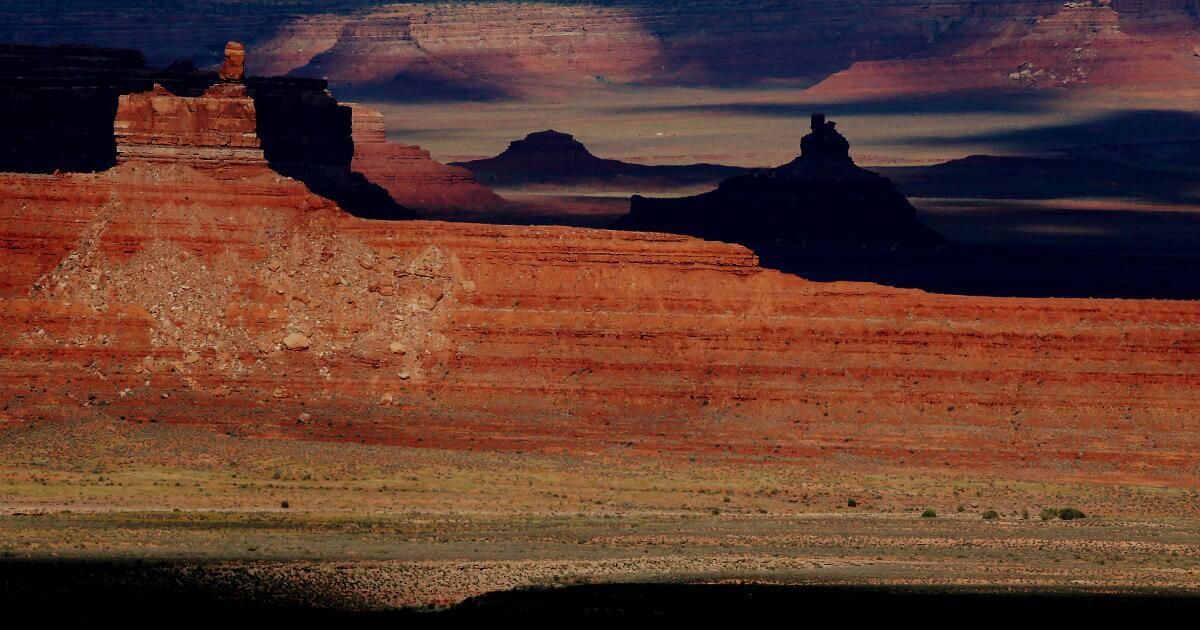Thanks to a storm of recent executive orders and Night Congress maneuversThe public lands of the Nation have become the last objective in the giant suction vortex of current American politics. The current administration proposes that people sign our invaluable citizen heritage, apparently to “create jobs, feed prosperity and significantly reduce our dependence on foreign nations.” Before we do, it is important to calculate the true cost of this mass monitoring of land.
The federal government manages natural resources in “public lands” throughout the country as a kind of “common” on behalf of all Americans. So, regardless of where you live, you are part of the owner of 640 million acres, approximately 28% of the country, protected as public lands. The vast majority of these holdings (around 95%) are administered by the “four great” agencies: the Office of Land Management (245 million acres), the United States forest service (193 million acres), the fishing and wild life service of the United States (95 million acres) and the national parks service (85 million acres).
The evolution of this vast shared domain began following the American revolution, when the new Territorial appetite of the nation demonstrated insatiable. After only 70 years, the United States continental scheme seemed as it does today. For this always ambitious republic, the key to extending American sovereignty from the sea to the brilliant sea was control over the earth itself.
To transfer public land to private hands efficiently, Congress approved a Series of laws: Homestead's Law, the General Mining Law, the Desert Land Law and Timber and Stone's Law, for example. While these efforts unleashed a white tide of settlement in federal and unprotected native lands, privatization also caused ecological ravages.
Historian Vernon Parrington He called this draw “The Great Barbecue.” “The Congress had rich gifts to grant,” he argued, “in land, tariffs, subsidies, favors of all kinds; and when influential citizens announced their wishes by the reigning statesmen, the comprehensive politicians quickly went to make the government the fairy fairy, the voters wanted it to be.”
After the Civil War, the Federal Government continued to promote Western settlement and the extraction of resources with little supervision or regulation. But the mercantilization of the Castors, the bison, the whales, the ancient forests, the salmon, the elce, the grizzlies, the wolves and the agricultural lands of the nation to supply an insatiable global market final [their] Heritage “and loaded with” a careless government of the future. “
The Federal Public Land Management emerged as well as the consequence of the implacable search for wealth that devastated so many ancient American ecosystems. As an early scientist George Perkins Marsh He argued: “Man is everywhere a disturbing agent. Wherever he raises his foot, the harmonies of nature become discords.”
By 1900, the myth of inagustible gave way to the reality of decreased forests, river routes and wildlife populations. It turned out that capitalism without restrictions caused real environmental damage.
In this critical situation, Theodore Roosevelt He made the oath of the position as the 26th President of the Nation. An early and avid defender to protect wild places and wildlife, Roosevelt adopted the progressive idea that the federal government was the best administrator of the nation's natural resources and the best tutor against its rampant capitalist exploitation. His appearance of public lands in the United States adhered to the philosophy of “The greatest good of the greatest number. “
To administer the growing Federal Silvestre Life Reserve System, Roosevelt consolidated several agencies in the Office of Biological Surveys in 1905, which merged with the Fishing and Wildlife Service in 1940. Also in 1905, Roosevelt transferred the country's forest reserves to the newly coined forest service. In total, during his mandate in the White House, Roosevelt Reserva Almost 230 million acres such as national parks and monuments, preserves of birds and games, and national forests. Like the public lands.
“We are not building this country for a day,” he said. “It is to last through the centuries.”
By 1916, the growing National Parks System of the Nation, also known as “The best idea in the United States” – I obtained its own management agency, the National Parks Service, to control poaching and vandalism. And in 1934, during the great depression and the Dust Bowl, when the owners broke, the federal government began attacking the program withdrawing land from the public domain and consolidating it, in 1946, under the office of land administration.
The truth is that private resources users had demonstrated damn administrators of the landslides, forests, rivers and open spaces of the nation. The price of its economic success was, too often, ecological ruin. And because the desert, parks, monuments, preserves, habitats, estuaries and ecosystems exist within a political system that consecrates private properties and rights of owners, environmental protection I needed both law and land to succeed. The public lands had to be administered for people. All people.
An essential concept to understand our public lands is this: designations are No Created from federally seized private lands. When a president establishes a national monument or the Congress classifies an area as a desert, these actions only change management practices In existing federal lands. This is perhaps the most common erroneous concept and one that Erroneously feeds the opposition.
Each designation of public lands It has unique management protocols. Understanding how restrictive regulations (or not) provides information about your role and function. The majority prioritizes multiple use, the greatest good for the greatest number, and even the most limiting, such as desert policies or national parks, still allow camping, hunting, fishing and, in some cases limited, grazing and even mining.
The desire of the Trump administration of Sell public lands and reduce national monuments echoes an ideology of previous artemisa rebellion: if the federal government renounces its control over public domain, state and local state economies will flourish. According to this logic, states lose income because they cannot tax or sell these acres. More significantly, uninverting the federal government of their public lands would eliminate exploitation protections. Think about “drilling, baby, drilling.” And “mine everywhere.”
Here in the 21st century, we cannot cling to unregulated economies of the nineteenth century without risking the ecological destruction that accompanies them. Scientists have coined the term “anthropocene” to describe the period of time, approximately from the industrial revolution, when human activities have increasingly defined the physical environments of the earth. Even now, at the forefront of climate change in a planet whipped by increasingly violent and destructive environmental crises, public lands have the extraordinary promise of modeling a sustainable future for the nation and the world.
The western writer par excellence Wallace Stegner calls humans “the most efficient and ruthless environmental buyers in history.” But he also marveled at our ability “to save what [we] It could destroy. “Our parks, monuments, coasts, battlefields, forests, preserves and open ranges are not partisan.
For Stegner, for all of us, the public lands – our Lands: They are really the “geography of hope” of the nation.
Sara Dant, author of “Los Ing Eden: An Environment History of the American West”, is a historian and emeritus professor at Utah's State University.












